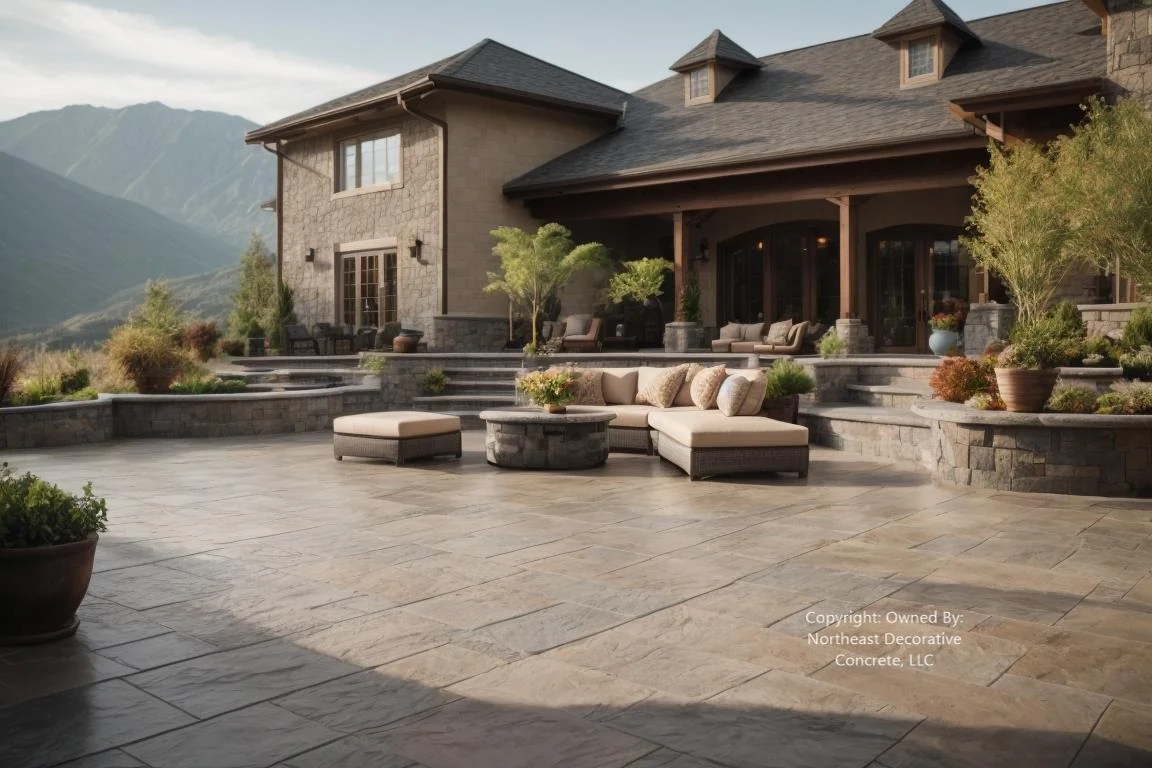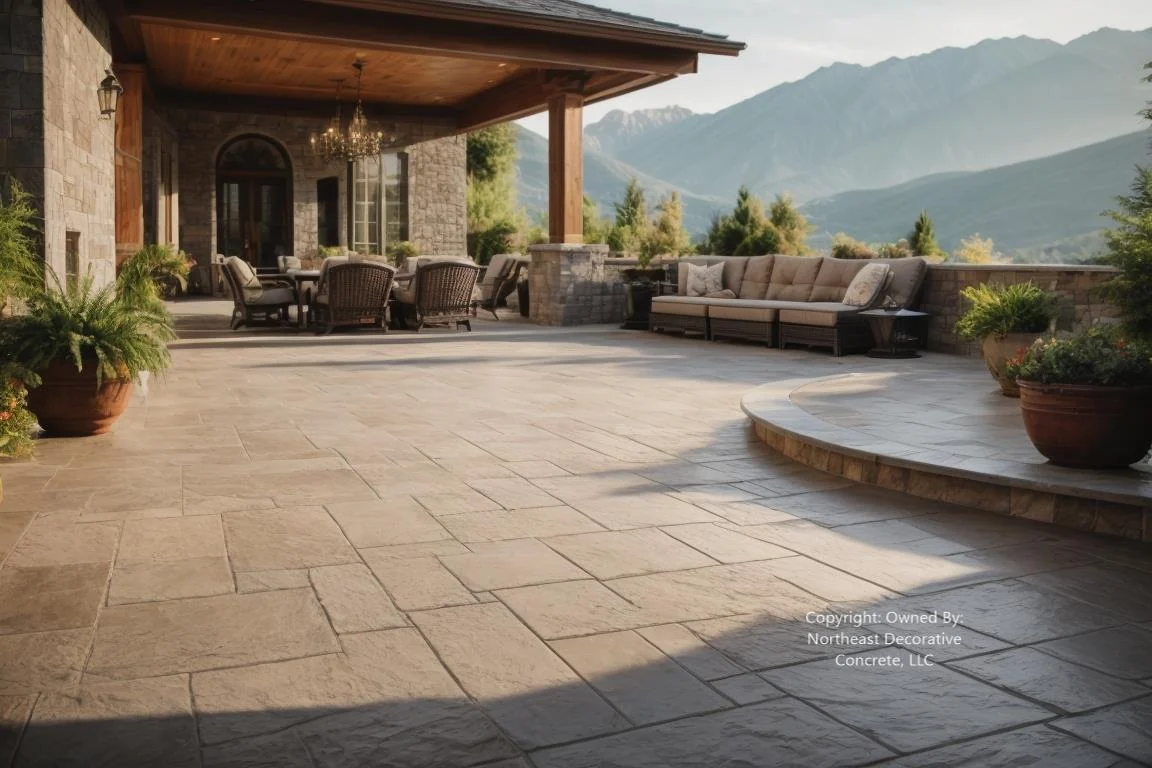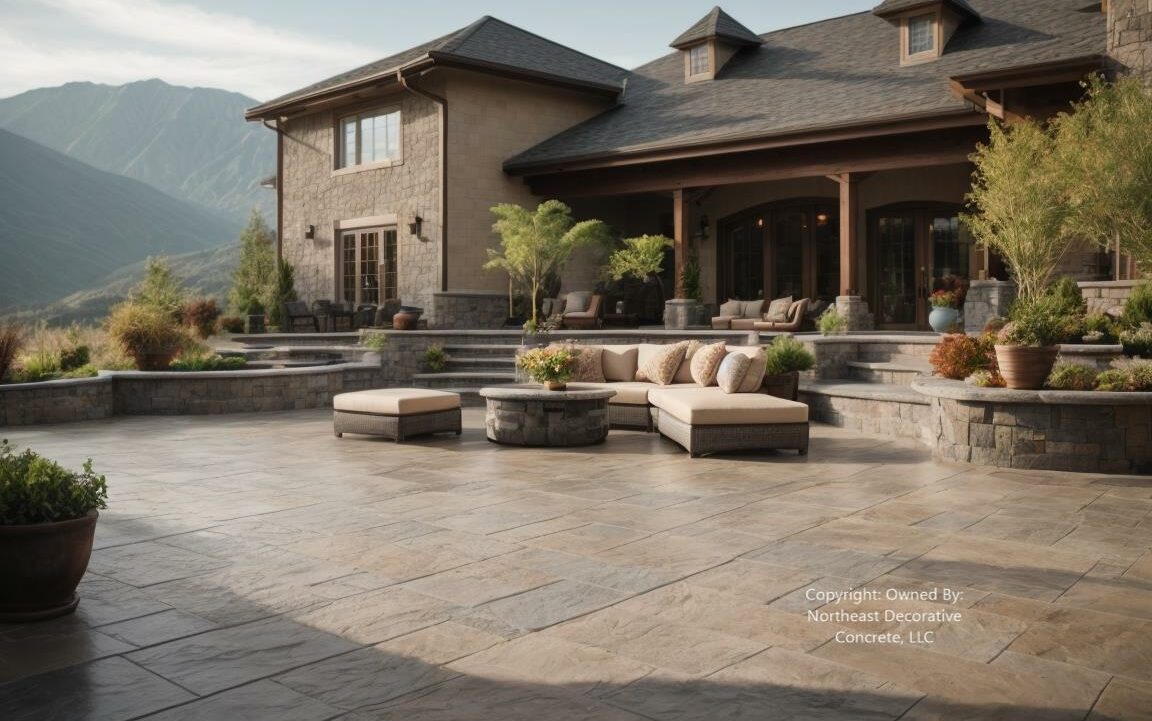
What To Do If It Rains After Sealing Stamped Concrete
After spending days in preparation, stamping, and sealing your concrete patio with acrylic concrete sealers, you were now ready to enjoy your beautiful new area. You also did the same to your walkway and driveway. You picked a warm sunny day to apply the sealer. But a few hours later, the weather takes an unexpected turn, and it starts pouring! Now what? Don’t panic – here’s your game plan for dealing with rain on freshly sealed decorative concrete.
I have saved many resealing jobs in New England rainy weather. I sealed stamped concrete for over 40 years. I did this by using a high-powered backpack gas leaf blower. The key is to get out there and blow the water off as fast as you can after it rains it needs to dry. Occasionally, I would swiftly apply another thin layer of sealant immediately after I ensured it had fully dried. This would reactivate the existing penetrating concrete sealer. After the water diluted it, the sealer returned to its normal curing strength to continue the curing process.
Here is a helpful table summarizing the key steps for what to do if it rains after sealing the stamped concrete surface:
| Step | Action |
|---|---|
| 01 | Assess if the rain is light or heavy. Light rain 1-3 hours after sealing may not cause damage. Heavy rain within 12-16 hours can be problematic. |
| 02 | For light rain, check for standing water and scrub away any solvent residue after the rain stops. Reapply sealer if needed after fully drying. |
| 03 | For heavy rain, act quickly using a squeegee, hose, or foam board to remove standing water so it doesn’t penetrate the sealer. |
| 04 | Thoroughly inspect the concrete floor for damage like whitish discoloration, bubbles, cracks, or roughness. |
| 05 | In cases of mild damage, you should gently scrub the stained areas, rinse them, and wait for them to fully dry before applying a second coat to those spots. |
| 06 | For more severe damage accompanied by flaking or blisters, it is recommended to completely strip the blemished sealer and reapply the water-based, or solvent-clear coat over the entire surface. |
| 07 | Only seal concrete again during ideal weather – sunny, dry, and 50-90°F temps with no rain expected for 24-48 hours. |
| 08 | When reapplying sealer, carefully follow manufacturer guidelines for preparation, application in thin even coats, and drying time between coats. |

Proper Decorative Concrete Sealer Cure Timing & Effects
Here is a table summarizing the key points about dry time for concrete sealers and the effects of water exposure:
| Sealer Type | Ideal Dry Time Before Rain | Effect of Early Water Exposure |
|---|---|---|
| Acrylic | 24-48 hours | Whitening, flaking, poor curing |
| Polyurethane | 36-48 hours | Blistering, peeling, discoloration |
| Epoxy | 48-72 hours | Fish eyes, poor adhesion, haziness |
| Urethane | 24 hours | Blushing, flaking, adhesion loss |
The main takeaways are:
- Allow 24-72 hours of dry time before rain exposure depending on the sealer type
- Early water exposure can cause issues like flaking, blistering, whitening, and poor curing
- Acrylic and urethane sealers tend to have slightly shorter ideal dry times
- Epoxy and polyurethane sealers need longer (48+ hours) for full curing before rain
So in summary, it’s crucial to check weather forecasts and allow adequate dry time before rain or moisture can affect freshly sealed concrete surfaces.

Act Fast After Water-Based And Solvent-Based Unexpected Rain
If you get a major downpour or extended rain right after concrete sealer application, speed is key. As soon as the rain stops, get out there ASAP and remove any standing water. Push or squeeze the water off surfaces so it doesn’t seep under the sealer.
Be super gentle during this process. Rough scrubbing or brushing can damage the still-curing sealer. Ensure that you do not make the rookie mistake of thinking you can simply re-apply more acrylic water-based concrete sealers on top of rain-damaged areas. You’ll trap moisture and make things worse!
Tips & How To Avoid Rain Before Sealing With Acrylic Sealers
The best way to avoid rain woes is to carefully check temperature and humidity weather forecasts first. Only apply on sunny, dry days. Make sure no rain is expected for 24-48 hours after application.
Cooler spring and fall temps between 50-70°F are ideal sealing conditions. Avoid extreme heat over 90°F. Sealers dry too fast in high heat, raising the risk of blisters and poor bonding. Careful weather planning prevents so many headaches!
With good prep and attention to the weather, sealing fully cured decorative concrete doesn’t have to be nerve-wracking! Just arm yourself with the right knowledge on what to do if Mother Nature throws some surprises your way.
Our Locations:
Nashua, NH
North Hampton, NH
Concord, NH

